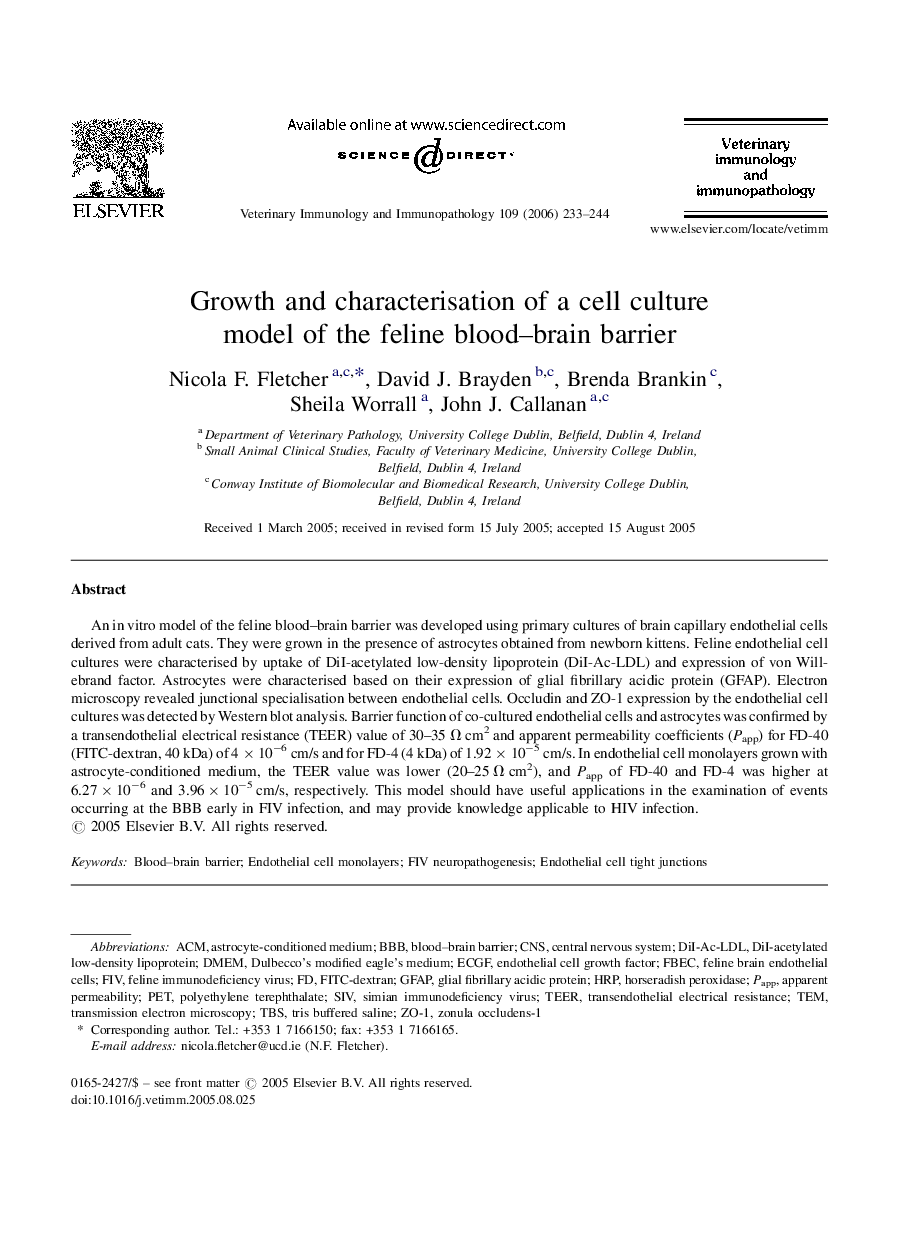| کد مقاله | کد نشریه | سال انتشار | مقاله انگلیسی | نسخه تمام متن |
|---|---|---|---|---|
| 2463625 | 1555127 | 2006 | 12 صفحه PDF | دانلود رایگان |

An in vitro model of the feline blood–brain barrier was developed using primary cultures of brain capillary endothelial cells derived from adult cats. They were grown in the presence of astrocytes obtained from newborn kittens. Feline endothelial cell cultures were characterised by uptake of DiI-acetylated low-density lipoprotein (DiI-Ac-LDL) and expression of von Willebrand factor. Astrocytes were characterised based on their expression of glial fibrillary acidic protein (GFAP). Electron microscopy revealed junctional specialisation between endothelial cells. Occludin and ZO-1 expression by the endothelial cell cultures was detected by Western blot analysis. Barrier function of co-cultured endothelial cells and astrocytes was confirmed by a transendothelial electrical resistance (TEER) value of 30–35 Ω cm2 and apparent permeability coefficients (Papp) for FD-40 (FITC-dextran, 40 kDa) of 4 × 10−6 cm/s and for FD-4 (4 kDa) of 1.92 × 10−5 cm/s. In endothelial cell monolayers grown with astrocyte-conditioned medium, the TEER value was lower (20–25 Ω cm2), and Papp of FD-40 and FD-4 was higher at 6.27 × 10−6 and 3.96 × 10−5 cm/s, respectively. This model should have useful applications in the examination of events occurring at the BBB early in FIV infection, and may provide knowledge applicable to HIV infection.
Journal: Veterinary Immunology and Immunopathology - Volume 109, Issues 3–4, 15 February 2006, Pages 233–244